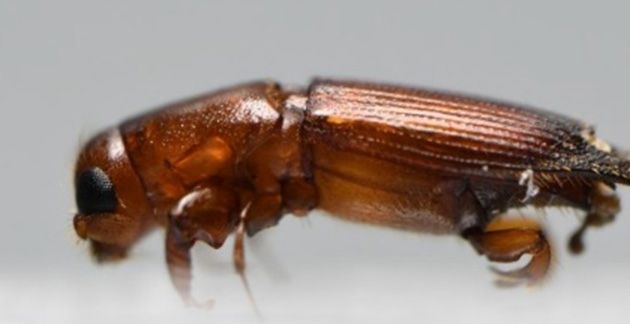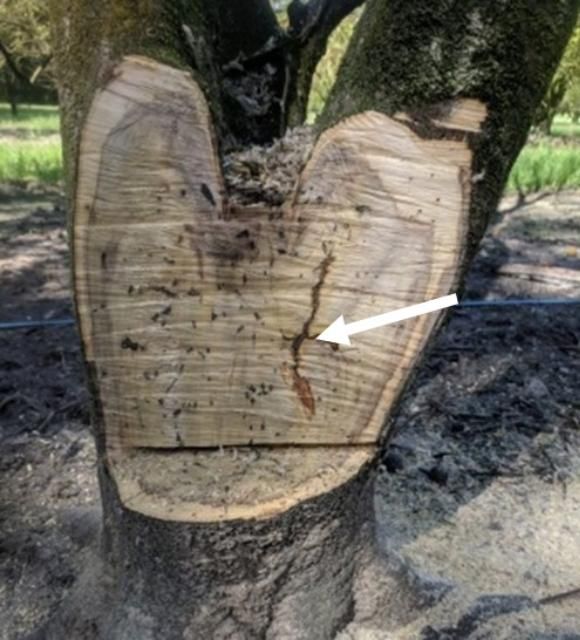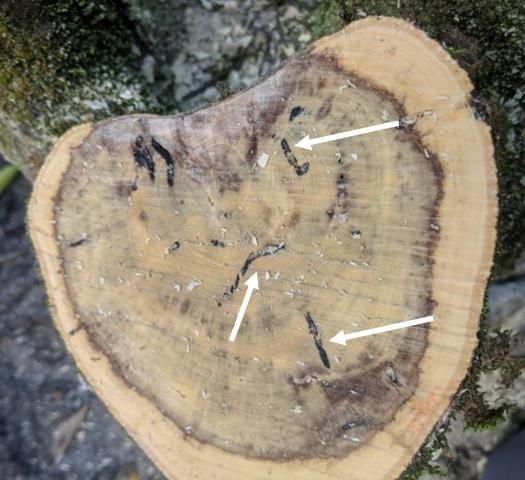Ambrosia beetle is the common name for a very large group of small, wood-boring beetles that live in dead or severely stressed trees or cut wood. Ambrosia beetles are attracted to the odor these trees release.

Credit: T. R. Weeks, UF/IFAS CREC

Credit: T. R. Weeks, UF/IFAS CREC
Life Cycle
After locating a host tree, ambrosia beetles chew into wood, creating a gallery consisting of tunnels. The beetles carry spores of their associated symbiotic fungus in specialized pouches called "mycangia." After introducing these spores into trees, the beetles "farm" the fungus, which is their sole source of food. Females lay eggs near the fungus, and emerging larvae as well as adult beetles feed on the fungus. Larval development can take weeks to months depending on beetle species, tree host, and weather conditions. After larvae complete development, adults emerge to seek mates and new host trees, repeating this cycle
Damage
Sawdust at the tree base is generally an indicator that ambrosia beetles have bored into the tree trunk. Galleries created by beetles within trees are visible as dark, stained tunnels.

Credit: L. M. Diepenbrock, UF/IFAS CREC

Credit: L. M. Diepenbrock, UF/IFAS CREC
Because ambrosia beetles tend to prefer dead or declining trees, they generally do not affect healthy trees. Only five to ten known species cause damage to important tree species, while the majority are harmless forest dwellers functioning as "nature's recyclers."

Credit: L. M. Diepenbrock, UF/IFAS CREC

Credit: L. M. Diepenbrock, UF/IFAS CREC